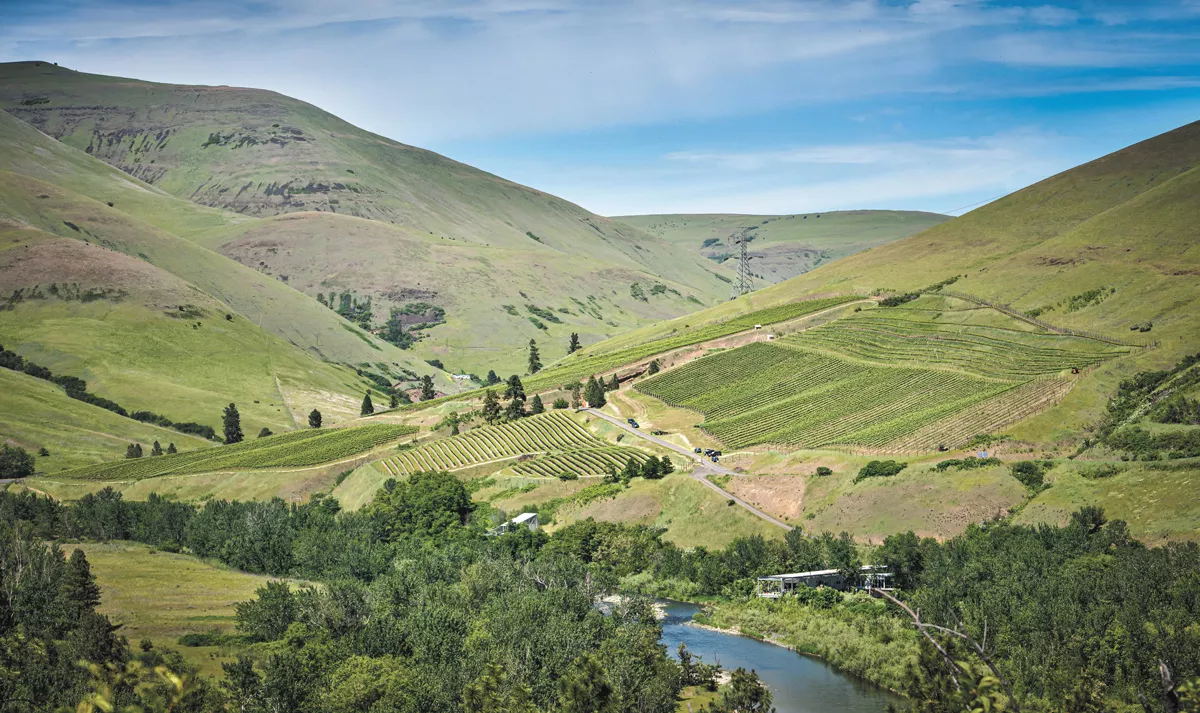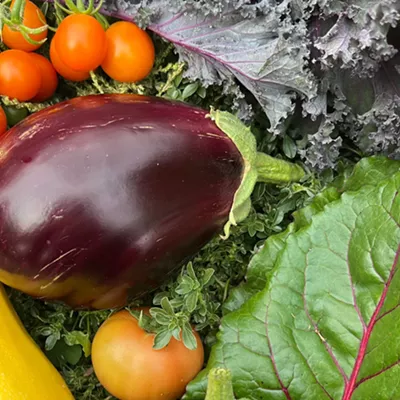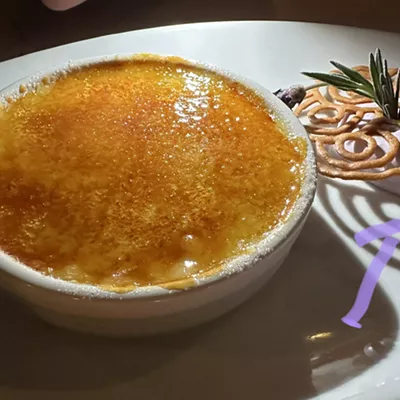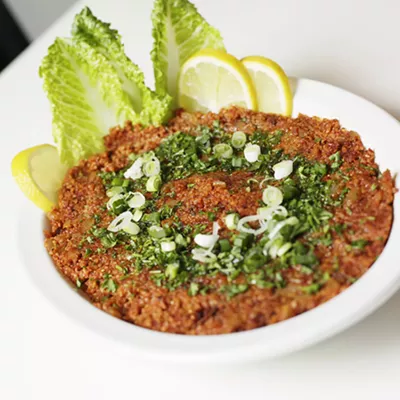Melissa Sanborn and her husband, Mike Pearson, have combined their mutual love of growing things and drinking wine into a fruitful business.
"Being in the vineyard and growing the grape that people will eventually enjoy in their glass is really rewarding," says Sanborn. "I don't think either of us would do this if we couldn't have a hand in growing the grapes we use."
Born and raised in Spokane, Sanborn moved to Moscow in 2001. It was there that she met Pearson, an electrical engineer turned chemist and founder of Anatek Labs, a full service environmental analytical testing laboratory.
"My bachelor's degree was in chemistry, so we had a shared interest there," she says. "We discovered we also shared an interest in wine when I decided to return to school to study wine science through WSU's food science program."
Sanborn says the couple soon learned about the Lewis and Clark Valley, and not long after that their thoughts turned to starting their own winery there.
"The Lewis and Clark Valley was one of the Northwest's first grape-growing regions up until Prohibition wiped everything out," she says. "It was also close to Moscow and Mike's business."
She says that on their first venture out exploring properties along the Clearwater River in 2007, the two noticed an abandoned vineyard with a for sale sign.
The site had been planted in the 1980s by property owner Larry Spencer, with 5 acres of chardonnay, white riesling, and rkatsiteli, an Eastern European white grape. In the 1990s then-new owners Larry Kornze and Sherman Stapleton expanded that to include three additional acres of Bordeaux grapes including cabernet sauvignon, cabernet franc and merlot.
It was a striking opportunity. "We got in touch with the Realtor, and everything just kind of fell into place," Sanborn says. "When we bought the property, there were about 7 acres of vines still alive. Thankfully we were able to revive those and are still using them today for wine."
While they waited for the older vines to recover and the newly planted vines to mature and start producing grapes, the couple decided to create a first vintage using grapes from various other Northwest vineyards.
"For that first vintage in 2008 we used grapes from other vineyards in the Lewis and Clark Valley, the Snake River Valley, and some from Washington," she says.
Over the next few years, the pair continued planting and grew the vineyard into what is now a 30-acre production site, located at the confluence of the Clearwater and Potlatch Rivers.
"We produce about 5,000 cases of wine each year, so we're still pretty small," she says. "We don't use big tanks, because we don't produce that much."
While most wineries are segmented, with cold storage in one room or building and production, equipment storage, barrel room or cellar in separate areas, Sanborn says Colter's Creek is more compartmentalized.
"Our production room is the main and largest part of the facility, at about 5,000 square feet," she says. "Our cellar is built underground to utilize natural ground cooling for bulk wine in barrels, our warehouse is chilled to house case goods, and our crush pad is outside as it doesn't need heating or cooling."
Sanborn describes production at Colter's Creek as quite traditional. "Our vineyard is laid out pretty steeply, which makes it necessary to hand-pick the grapes," she says. "We use automation where we can, but we also do a lot of things by hand."
She says the winery employs 10 key employees, plus part-time and seasonal workers.
"Both myself and Mike are involved in administration, but he oversees the vineyard and fixing anything that breaks down, as well as overseeing the winery and staff," she says. "And we have great employees who handle the sales and marketing, as well as events."
Sanborn says the two biggest factors that set Colter's Creek apart from other wineries are its location and its traditional approach to production.
"Not only are we one of only 60-some Idaho wineries, but we're one of the few located in the Lewis and Clark Valley," she says. "And the fact that we plant, grow, produce, bottle, age and sell everything ourselves is something special. As the industry evolves it's rare to see a winery that's not outsourcing in some way."
In addition to its Potlatch production site, Colter's Creek has two tasting rooms, both of which are situated in historic buildings that have been remodeled. The first, a former pharmacy in Juliaetta, Idaho, houses a tasting room and restaurant that opened in 2012.
The second, a tasting room and wine bar that opened in 2018, occupies the first floor of Moscow's historic Hattabaugh building. The building's upper floor, which previously housed apartments, was remodeled into a boutique hotel space in 2021.
"People are always looking for neat, fun spaces to stay, and it offered a good connection to our tasting room there too," says Sanborn.
Colter's Creek has 17 grape varietals growing in its vineyards, 15 percent of which are white, with the remaining 85 percent being red varieties.
"We're working to get more white varietals into production, because there seems to be an increased interest in white wines," says Sanborn. "Because of our size, the types of wine we produce vary each year depending on the vintage."
She says the rosé and syrah are among the winery's most popular bottles.
"The rosés are popular because we only make a couple each year, and we don't make a lot of it," she says. "Idaho in general is pretty well known for syrah, and ours are no exception."
When it comes to pairings, Sanborn recommends pairing the syrah with lamb chops, while the cabernet franc or cabernet sauvignon shine when paired with meats or even pizza.
"In the late summer I also enjoy pairing our rosé with anything tomato based — your fresh salads, bruschetta, etc.," she says.
Sanborn says what she most enjoys about being a winemaker is growing and tasting different wines from all over the world.
"I love drinking different wines and picking new varietals that we can possibly grow and produce here," she says. "There are so many wine grapes I don't know about yet, and we're always discovering more."
In fact, Sanborn says the winery is already experimenting with a few different varietals, and this year will be its first year working with a white grape called friulano.
"It's another unique, Italian varietal that's not widely planted in the U.S., so it will be fun to see how well it grows here," she says.




















